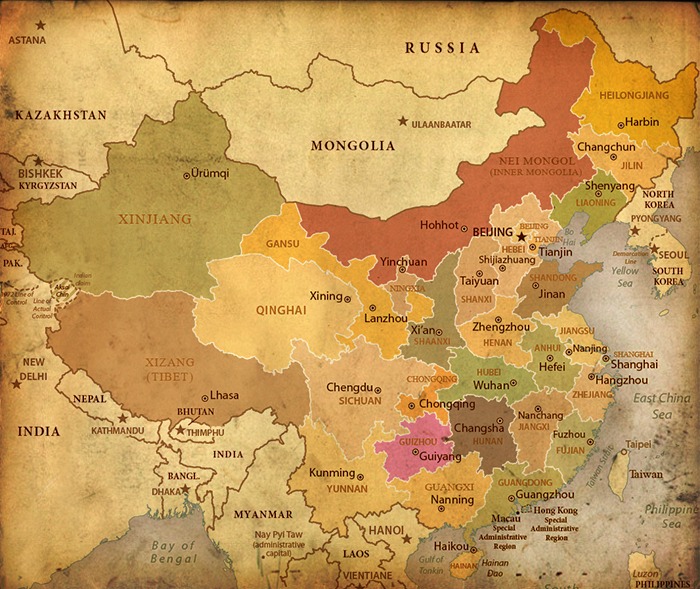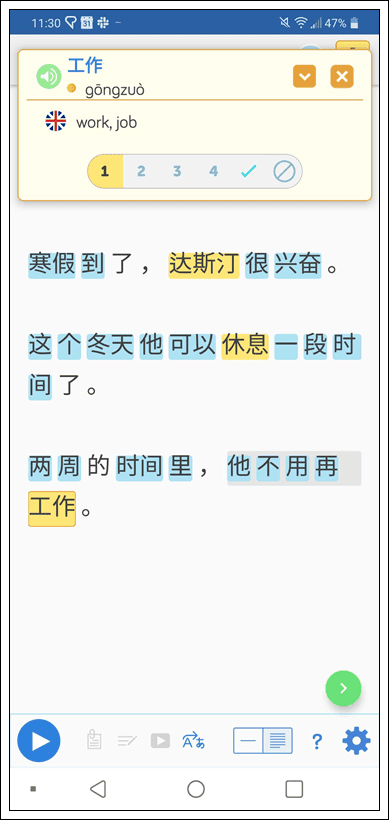Just How Many Chinese Dialects Are There?
No matter where you are in your Chinese learning journey, you’ll definitely have noticed the huge variety of “dialects” that all fall under the term “Chinese.” This is a huge interest area of mine, and it seems the more I read about it the more I have to learn. Today, I want to introduce this topic in a way that I hope can stimulate your own interest. We’ll explore some well-known varieties of Chinese as well as some that you’ve probably never heard of.
Before we begin, a word on terminology. Most people use the term “dialects” but I prefer the more neutral word “varieties.” In addition, some argue that the proper word is actually “languages.” This point of view is certainly not without merit, but it’s not quite how Chinese people themselves tend to view the situation. In linguistics, the word “topolect” is also used, which is a translation of fāngyán – literally place-language or place-words.
The Main Chinese Dialects
The language situation in China can be broadly divided into “families” – that is, collections of topolects that are more or less similar. But this isn’t as easy as it sounds, as there are literally hundreds of topolects within China, and the majority of the population can speak at least two (usually three or more!) This makes it hard to confidently make the tiny distinctions necessary for topolect classification. All of these families evolved from Middle Chinese, starting close to 2000 years ago. China’s been around for a long time!

Mandarin
What is Mandarin Chinese ou ask? Well, it is the official language of China, Taiwan, and Singapore, and is widely spoken in Malaysia and Hong Kong (though we’ll get back to Hong Kong in a minute). You’ll also hear it on the street in scores of other countries around the world, thanks to its widespread use in the Chinese diaspora. It belongs, fittingly, to the Mandarin family. It’s by far the most spoken variety, and the prescribed “standard speech” has its roots in the language of the Beijing aristocracy.
Let’s take a few words in Mandarin as an example:

Variants of Mandarin are spoken over a vast area of China, not just Beijing. Northeast and Southwest Mandarin are different enough that native speakers usually have a hard time understanding each other if neither of them makes an effort to “standardize” their speech. Speakers of Sichuanese in particular are very proud of their topolect, and you can find a number of talk shows or comedies filmed in this variety.

Cantonese
The term “Cantonese” refers to the speech of the people in Guangzhou and its environs in southern China. Today, Cantonese is an official language in Hong Kong and Macau, and is also widely spoken in ethnic Chinese communities overseas, particularly in North America. It belongs to the Yue family, and many people today use this word instead of “Cantonese”. The speech of Guangzhou and the speech of Hong Kong differ slightly, but speakers of each variety can understand the other without difficulty. Cantonese has a certain level of prestige and allure worldwide thanks to Hong Kong’s enormously popular film, television, and music industries.

We’re just starting off, but let’s take a brief look at these two. How similar are they? A lot of words are recognizable as cognates in both varieties, but full sentences are different enough that understanding is difficult to impossible. In addition, a few very common words or phrases are completely different, like the words for “where” and “how much.” If you’re a native or very advanced Mandarin speaker, you definitely have a big advantage when starting to learn Cantonese – but it’s no freebie. Cantonese has six tones compared to Mandarin’s four, and a small collection of vowels that even native Mandarin speakers have trouble with.
How do our examples from before look in Cantonese?

Hokkien
Moving on, some readers may be familiar with Hokkien. It’s from the Min language family, and thus another name for it in Mandarin is Mǐnnánhuà. Whatever you like to call it, this variety of Chinese originated from a southern province called Fújiàn in Mandarin or Hok-kiàn in the local topolect.
The majority of Han Chinese that settled Taiwan were originally from this part of China, and thus today most Taiwanese people can speak or at least understand Hokkien–indeed, in Taiwan it’s also known as Taiwanese. But people from Fujian didn’t just go to Taiwan–there are also sizable populations of Hokkien speakers in Singapore, Malaysia, and parts of Indonesia and Thailand. Although Hokkien doesn’t have anything like the media presence that Cantonese does, there’s still a variety of music, radio, and television out there for Hokkien learners to practice with.
Let’s take a look at our examples in the Taiwanese variant of Hokkien:

Wu
The last family we’ll touch on is called Wu, but it turns out this name isn’t as popular among native speakers. Shanghainese belongs to the Wu family, as do the topolects spoken in Hangzhou, Wenzhou, and Suzhou on the east coast of China. Chinese enthusiasts who live in Europe may be familiar with Wu, as a large percentage of ethnic Chinese in France and Italy can trace their roots, and their speech, to Wenzhou.
Wu is famous for having a great deal of internal variation, to the point that Wenzhounese is completely unintelligible to people from Shanghai. There are some TV shows in several Wu varieties, as well as a few scattered learning resources on the internet aimed at foreigners. Mostly, though, a native speaker tutor is your best bet for learning Wu.
And last, we’ll add Shanghainese to our example words:

So far we’ve discussed four main families of Chinese, but would you believe that some linguists classify up to eleven? These include Ping, Gan, Xiang, and Hakka just to name a few. These families represent enormous diversity, but then there’s all kinds of internal variation even beyond that.
Learn Chinese using content you love
It’s no secret that the more you read and listen, the better you’ll become at understanding Chinese. Even polyglot Steve Kaufmann agrees (he speaks 17 languages FYI).
However, reading Chinese can be difficult at first, especially since the characters are completely foreign to native English speakers.
But there’s a way to start reading right away…so you can learn faster.
Rather than looking up new words using a dictionary every minute and ruining your flow, check out LingQ. It’s the best way to learn Chinese online because it has a built in dictionary so you can easily look up words, save them, and review them in the ease of one platform.

Not only does LingQ make reading Chinese easier, it also is filled with thousands of hours of Chinese content. For example, if you’re a beginner, I recommend the Chinese mini-stories (pictured above).
These have been professionally transcribed so you can read and listen to the audio at the same time (and look up new words too). Not only that, but if you are feeling adventurous, you can import Chinese content from the web and study using videos from YouTube, podcasts, and much more. For example, you can import the transcripts from Chinese dramas (from the website Viki) and listen and read without any barriers. Best of all, you’ll learn at the same time. Last but not least, LingQ is available for both Android and iOS so you can take your lessons wherever you go 🙂
Go check out LingQ today and make your Chinese studies a whole lot easier using content you love. Good luck.
***
Alex Thomas first started seriously learning foreign languages five years ago and has never been the same since. He has traveled to more than 20 countries and currently uses German, Mandarin, and Indonesian daily.
